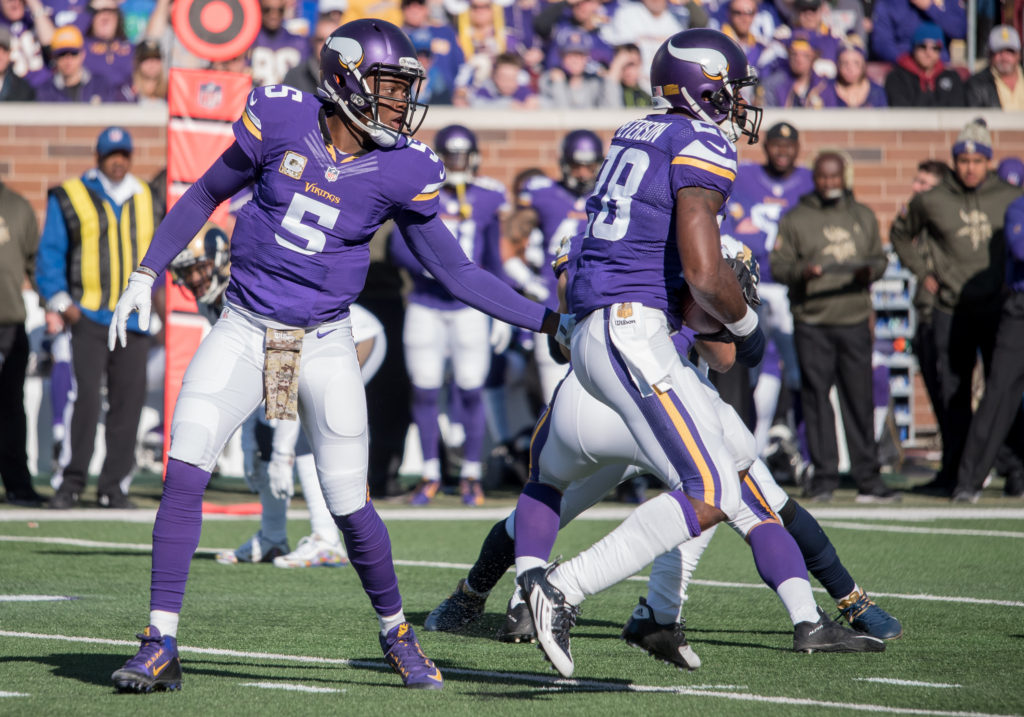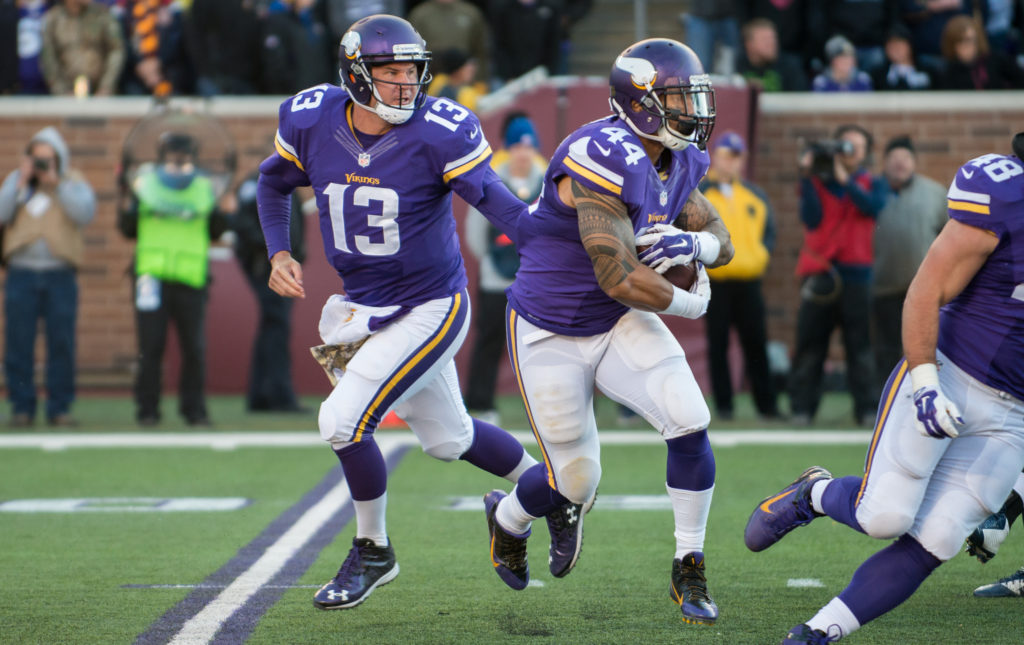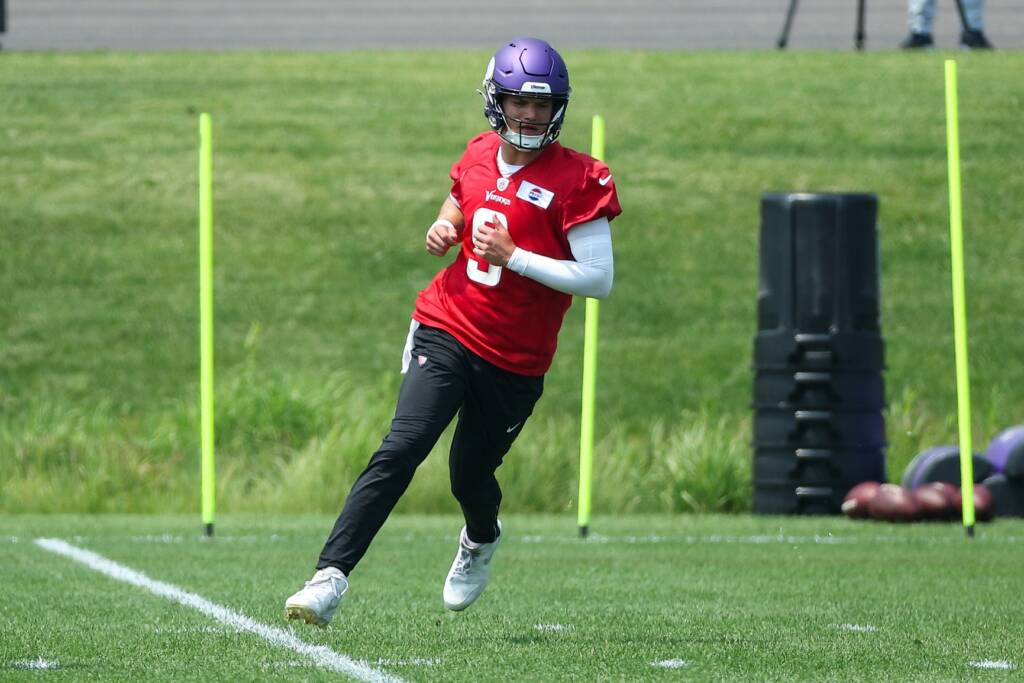Part I of a two-part series.
Some of the most satisfying seasons in sports occur when a team overachieves ahead of schedule. The Minnesota Vikings, who won the NFC North, were a prime example of this a year ago, as were their local counterpart, the Minnesota Twins, who were in postseason contention until the final weekend.
If you follow baseball, you know that the Twins have fallen flat on their face – 21 games below .500 — in a year that had garnered high expectations. While using a baseball team as dramatically bad as the Twins is an extreme example, it shows the danger of buying too much stock in a young team that has yet to put together back-to-back successful seasons.
Vikings fans may have opted to forget that they support a football team that has the perfected the art of the bait and switch. The team’s last four coaches have been fired the year following a playoff appearance as a result of some drastic swings in fortune. Denny Green (fired in 2001) and Brad Childress (2010) were axed a year after NFC Championship Game appearances when their aging teams’ windows quickly closed and the Vikings appeared in need of an overhaul and a new voice. Mike Tice (2005) never got the most out of his high-powered offensive teams because of some poor defenses, not to mention a lack of discipline off the field.
Vikings fans may have opted to forget that they support a football team that has the perfected the art of the bait and switch
The current Vikings don’t closely resemble any of those three outfits, however. They are young, defensively strong and, recently, very obedient off the field.
What many pundits will be cautioning is for fans to beware of a 2013-like setback.
The 2012 Vikings won double-digit games behind a second-year quarterback, a second-year coach and a rushing title from Adrian Peterson. They lost in the Wild Card round. A year later, they finished 5-10-1, underwent persistent quarterback turmoil and wound up firing head coach Leslie Frazier after the season.
The 2015 Vikings won double-digit games behind a second-year quarterback, a second-year coach and a rushing title from Adrian Peterson. They also lost in the Wild Card round. The question is: Are they better equipped to move forward than the 2013 group was?

Through a wide-angle lens, the two situations appear like mirror images, but those few broad brushstrokes are a convenient synopsis — nothing more. With a different coaching staff, a vastly overhauled roster and a division with a rearranged power structure, the 2016 season has fewer congruencies to 2013 than you’d think.
In retrospect, the Vikings’ 2012 success was an anomaly for an otherwise very poor defensive team that ended up finishing 31st and 32nd in points allowed in Frazier’s bookend years. Their 14th-ranked defense in 2012 was mainly a result of Adrian Peterson slowing down games with his 348 carries and the run defense keeping things relatively in check while the pass defense remained porous.
A year later, with Peterson back to being a mortal man and rushing for 4.5 yards per carry, the run-first offense wasn’t able to compensate for the team’s lackluster defense as the Vikings blew five games in the closing seconds.
The 2013 Vikings had an extraordinary number of starters who are no longer active or relevant in the league, primarily at the all-important quarterback position
The 2013 Vikings had an extraordinary number of starters who are no longer active or relevant in the league, primarily at the all-important quarterback position. The team had three different starters in ’13: Christian Ponder, Matt Cassel and Josh Freeman. None of them are currently employed. Not even Ponder, the 2011 first-round pick.
Basically, the Vikings need Teddy Bridgewater to not be the second coming of Ponder. If he spiraled into that danger zone, though, it would be surprising considering his career arc thus far. Say what you will about Bridgewater’s lack of arm strength or dearth of accuracy on deep balls, but Ponder’s first two years were far more topsy-turvy than Teddy’s. The former had interception problems that led to several early hooks in favor of backup Joe Webb, missed time with a handful of injuries (including a playoff game) and only once exceeded 10 yards per pass attempt in a game; something Bridgewater has done six times.
There were very few instances through two seasons when Ponder struck the fan base as a long-term solution at quarterback, which made his eventual downfall somewhat predictable. In fact, many fans were optimistic when Webb was named the starter for the team’s 2012 Wild Card game at Green Bay. Do you think that would have happened if Shaun Hill had been named the starter against Seattle last January? Unlikely.

Quarterback wasn’t the only wart on the 2013 Vikings roster. The majority of the starting lineup was infested with aging veterans, many of whom are out of the NFL.
Sure, some had earned their jobs thanks to years of quality service. One was Jared Allen, who was beginning to fade in ’13 and has since retired. Kevin Williams was also past his prime and has bounced around with two teams since leaving Minnesota.
Greg Jennings, picked up in free agency in 2013, never panned out and was released by the Vikings after 2014 and may now be done playing after a shoddy season in Miami. Charlie Johnson and John Carlson were amidst below-average Minnesota stints and have not played in the league since 2014.
All of the aforementioned players were entrusted with big roles in Minnesota
The Vikings also tried to get the most out of the oft-injured Chris Cook, former seventh-round pick Jamarca Sanford and former undrafted free agent Erin Henderson, but none stuck with the team into the Mike Zimmer Era. Cook finished his Vikings career sans an interception, Sanford was deemed to be a defensive liability and Henderson was booked twice for drunk driving.
All of the aforementioned players were entrusted with big roles in Minnesota, and the Vikings didn’t have the requisite depth at the time to unseat any of them.
Of course, as the saying goes, hindsight is always 20/20. What’s to say the Vikings don’t have the same situation on their hands with the 2016 roster? I’ll explain in Part II why Minnesota is better structured now than they were three years ago.

